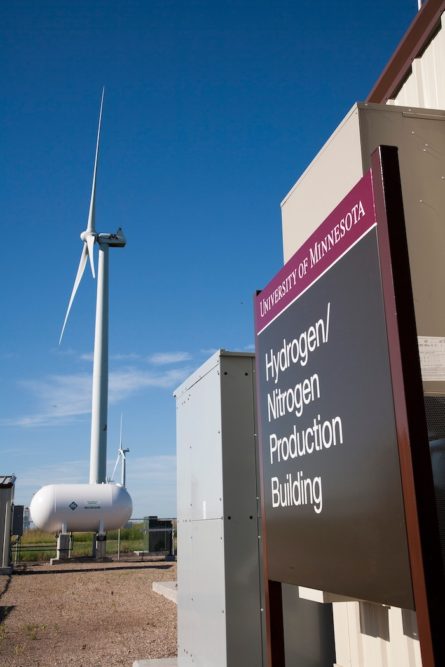No-Till Farmer
Get full access NOW to the most comprehensive, powerful and easy-to-use online resource for no-tillage practices. Just one good idea will pay for your subscription hundreds of times over.

This wind turbine powers research developing wind for fertilizer systems producing green ammonia. Ammonia produced through renewably powered electrolysis can also be used for fuel in internal combustion engines. Photo by: WCROC, University of Minnesota
As scientists search for cleaner methods of producing nitrogen (N) fertilizer, they increasingly look to replace the century-old method of treating natural gas with high-pressure steam to produce anhydrous ammonia — the backbone of most forms of agricultural N products
Lightning Nitrogen. One of the latest innovations comes from California startup Nitricity’s process of mimicking the effects of lightning on the atmosphere to produce nitrates to enrich irrigation water with plant-available N.
Lightning’s electrical energy is powerful enough to break the strong chemical bonds of atmospheric N’s two atoms, allowing them to quickly bond with oxygen in the air, forming nitrogen dioxide (NO2). Freshly formed NO2 quickly dissolves in nearby raindrops, creating nitric acid, which form nitrates. The nitrates fall to the ground in rain and seep into the soil.
“We’re harnessing the power of lightning,” says Nitricity CEO Nicolas Pinkowski, who says the process requires only electricity, water and air to produce one-step nitric acid. He says the system shows promise for decentralized, local N production that does not rely on fossil fuels.
Nitricity isn’t “collecting lightning, ala Ben Franklin” but instead relies on battery power generated through solar collectors. Prototypes include 10-50 kW solar arrays connected to the Nitricity on-site system, which is housed in a shipping container. The company’s current mobile N “factories” can be located near irrigation systems to supply chemigation pumps.
“Our first test treated feed water of a commercial tomato production facility’s drip-irrigation system,” Pinkowski says. The company’s process produces calcium nitrate (a water-soluble…